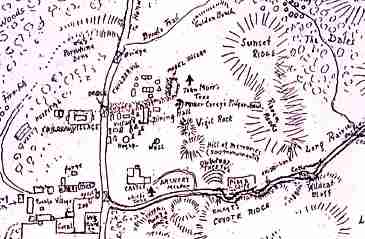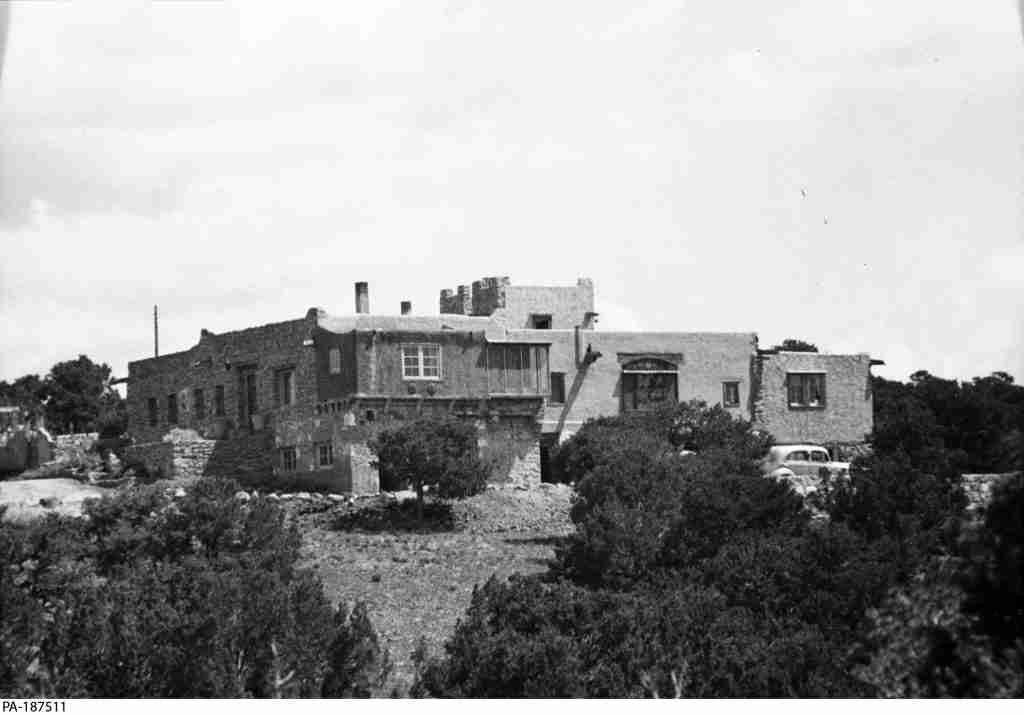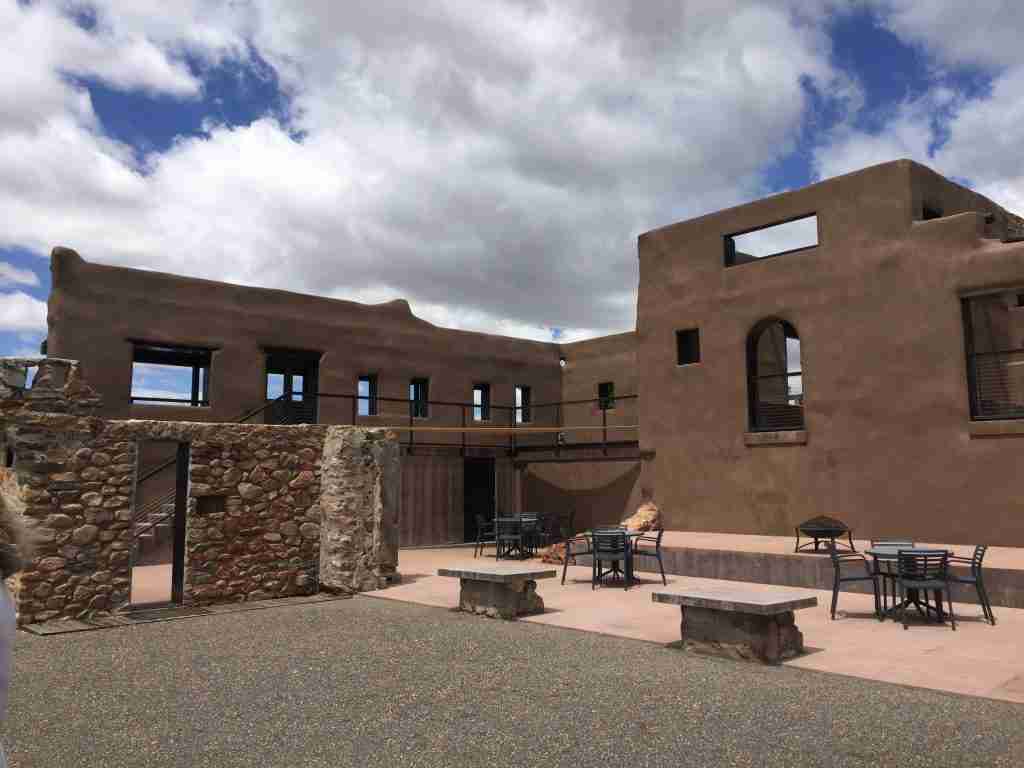When Seton acquired a 2,500-acre tract near Santa Fe and relocated to the area in 1930, he called his new project Seton Village. One of the first buildings in Seton Village was his temporary home Lagunita on present-day Seton Plaza.
1930 Seton acquired a 2,500-acre tract of land seven miles south of the Santa Fe Plaza. He described the site as “the last rampart of the Rockies.” He envisioned creating a conference facility he called the College of Indian Wisdom, which would ultimately include many structures.
The first structure built was Yek Yek, a small adobe house that would be Seton’s temporary home. Seton then built a somewhat larger house in what is now Seton Plaza he called Lagunita, which would be his home until 1932.
Seton began designing and constructing his final grand home, Seton Castle. Seton moved into Seton Castle in 1933. It was a large, eclectic adobe house with 32 rooms and 6,900 square feet. It sat near the property’s highest point and provided panoramic views of the plateau and the Jemez mountains in the distance.
Seton Castle was the centerpiece of a utopian community, including his extensive library and museum of his specimens and collections, a zoo, quarters for staff and participants, a print shop, a zoo, a tea house, a hogan, and a kiva.
The Setons hosted many guests from the Santa Fe community, including artists, writers, Native American leaders, anthropologists, and archeologists. He also hosted visitors from his enormous group of friends from all over the U.S. and around the world. As a part of the summer training programs, Seton hosted a Chatauque-type series of lectures and performances in a wide range to which members of the Santa Fe community were invited. Seton held court in a large hall adjacent to his extensive personal library.
After Seton’s death in 1946, Julia Seton continued to live in the house and actually expanded it. She later gave the property to her daughter Dee and her husband Dale Barber, where they raised their family.
Due to Dee’s poor health, the Barbers left the Castle and sold the property, including its contents, to the Academy for the Love of Learning, a nonprofit educational organization that planned to use the Castle as its headquarters following a planned extensive renovation. The Academy also agreed to preserve the Seton legacy as part of the sale agreement.
Unfortunately, as the complicated renovations were nearing completion, Seton Castle was destroyed by fire on November 15, 2005. After much deliberation, the Academy decided to build their new building nearby and maintain the Castle footprint and its remaining stone walls as a monument, outdoor meeting space, and meditation garden.
The Academy also maintains the Seton Gallery in its headquarters building, where Seton’s works are stored and displayed. The highlight of the gallery is Seton’s masterpiece, The Sleeping Wolf.
The Castle site is eerily similar to the walls of Wndygoul in Pomerance Park in Greenwich, Connecticut.





